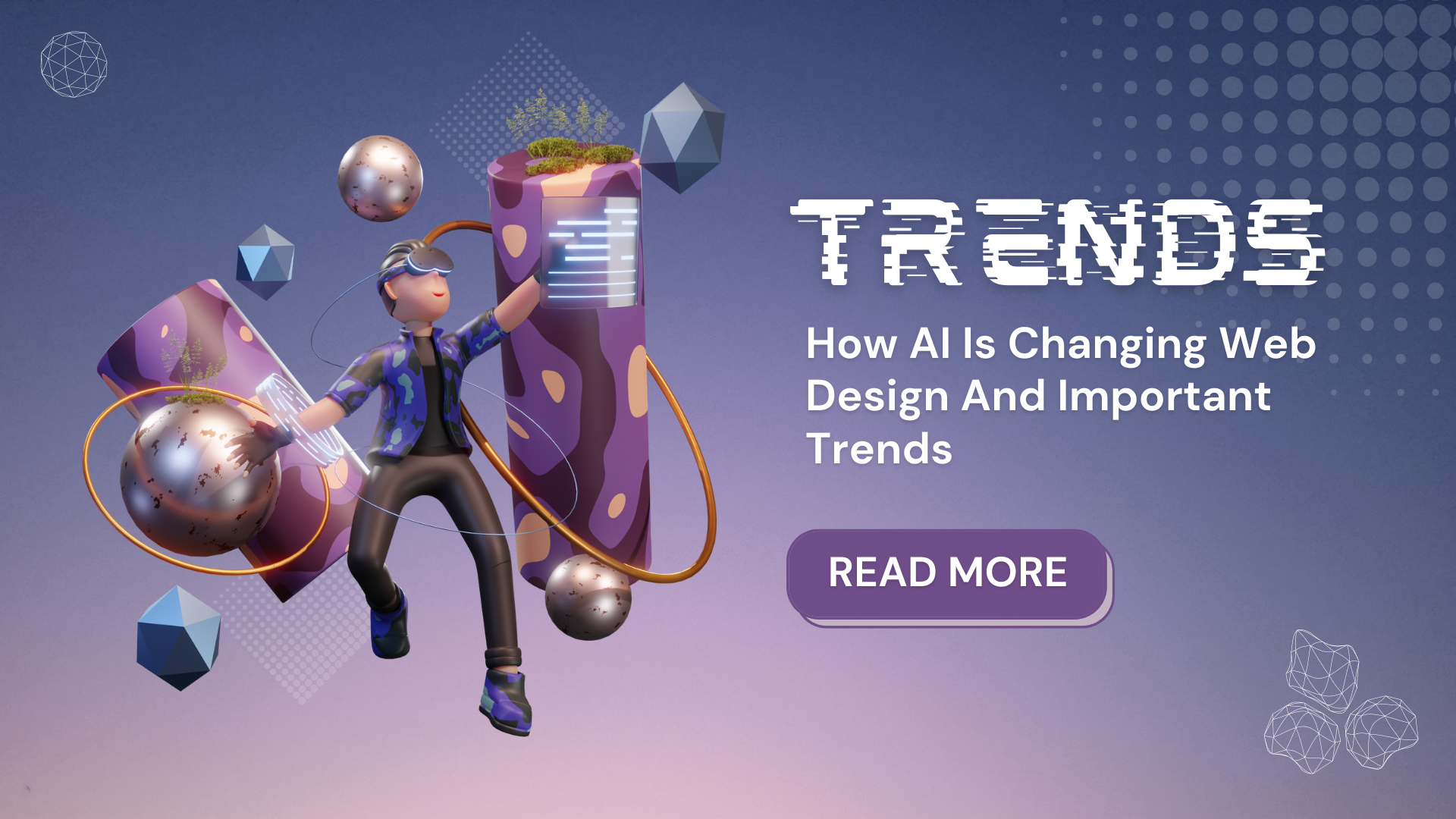How AI Is Changing Web Design and Important Trends
In the ever-evolving world of web design, artificial intelligence (AI) is emerging as a game-changer. From streamlining design processes to enhancing user experiences, AI is reshaping how websites are built, maintained, and optimized. Let’s explore how AI is changing web design and the important trends that are shaping the future.
AI-Driven Design Automation
One of the most significant impacts of AI on web design is automation. AI-powered tools can create entire websites based on user preferences and inputs. These tools use machine learning algorithms to analyze design trends and user behavior, allowing them to generate layouts, color schemes, and content that align with the latest best practices.
Key Benefits:
- Efficiency: AI can quickly generate website designs, reducing the time required for manual coding and design.
- Customization: AI tools can personalize designs based on user data, creating tailored experiences for visitors.
- Consistency: Automated design ensures consistency across different pages and sections of a website.
Enhanced User Experience (UX)
AI enhances user experience by enabling more intuitive and responsive website interactions. Through AI-driven analytics and user behavior tracking, designers can gain insights into how visitors interact with a site. This data can be used to optimize navigation, improve content placement, and enhance overall usability.
Key Benefits:
- Personalization: AI can customize content and recommendations based on user preferences and behavior.
- Predictive Analytics: AI can predict user needs and adjust the website experience accordingly, leading to higher engagement and satisfaction.
- Real-time Adjustments: AI can adapt to user interactions in real-time, providing a more dynamic and responsive experience.
AI-Powered Content Creation
Content is king, and AI is revolutionizing how it’s created and managed. AI tools can generate content, including text, images, and videos, that align with a website’s theme and objectives. These tools use natural language processing (NLP) to produce high-quality, relevant content that resonates with the target audience.
Key Benefits:
- Efficiency: AI can produce large volumes of content quickly, reducing the workload for human writers.
- SEO Optimization: AI can optimize content for search engines, improving visibility and ranking.
- Consistency: AI ensures content is consistent in tone, style, and quality across the website.
Voice Search Optimization
With the rise of voice-activated assistants like Siri, Alexa, and Google Assistant, optimizing websites for voice search has become crucial. AI plays a key role in understanding and processing natural language queries, allowing websites to provide relevant and accurate responses to voice searches.
Key Benefits:
- Increased Reach: Optimizing for voice search can attract more users who prefer voice commands over typing.
- Improved Accessibility: Voice search makes websites more accessible to users with disabilities or those who find typing challenging.
- Enhanced User Experience: Providing accurate and relevant voice search results enhances user satisfaction and engagement.
AI in Design Trends
AI is not only changing how websites are built but also influencing design trends. Here are some AI-driven trends that are shaping the future of web design:
1. Minimalistic Design:
AI tools favor clean, minimalistic designs that enhance readability and usability. This trend focuses on simplicity, with fewer elements on the page to reduce clutter and improve load times.
2. Dark Mode:
AI-driven design tools are increasingly incorporating dark mode options. Dark mode reduces eye strain, saves battery life on mobile devices, and offers a sleek, modern look.
3. Micro-Interactions:
AI enhances micro-interactions, which are small animations or design elements that provide feedback to users. These subtle interactions improve user engagement and make the website experience more enjoyable.
4. Chatbots and Virtual Assistants:
AI-powered chatbots and virtual assistants are becoming standard features on websites. They provide instant customer support, guide users through the site, and answer frequently asked questions.
5. AI-Enhanced Visuals:
AI tools can generate high-quality visuals, including graphics, animations, and videos, that enhance the aesthetic appeal of a website. These tools can also optimize images for faster loading times without compromising quality.
Conclusion
AI is revolutionizing web design by automating processes, enhancing user experiences, and driving innovative design trends. As AI technology continues to evolve, its impact on web design will only grow, making it an essential tool for designers and developers. Embracing AI in web design not only improves efficiency and customization but also ensures that websites remain at the cutting edge of technology and user satisfaction.

